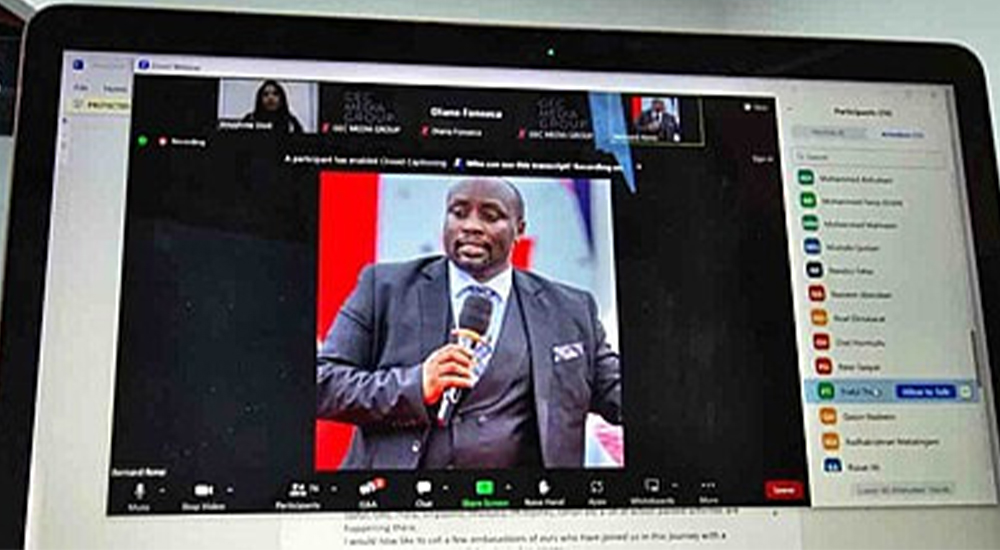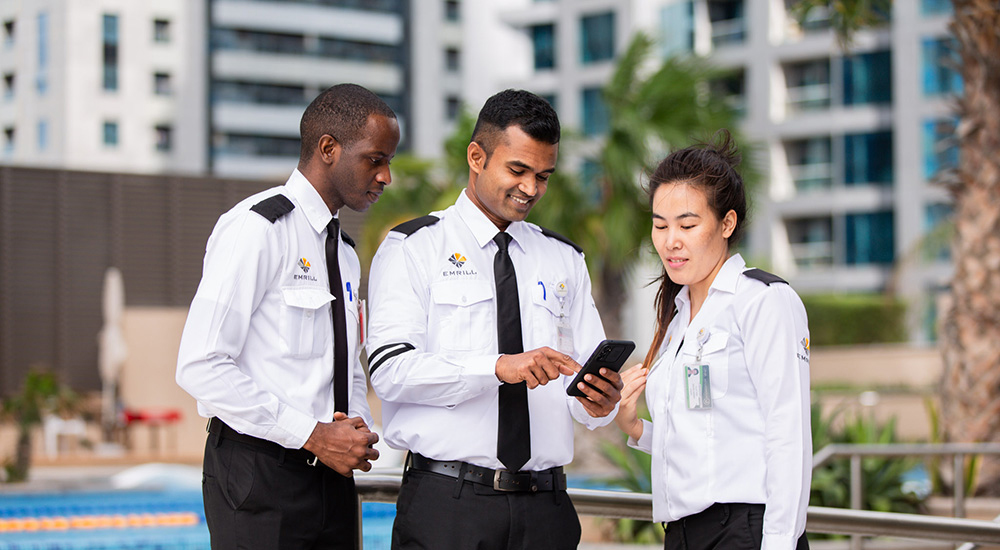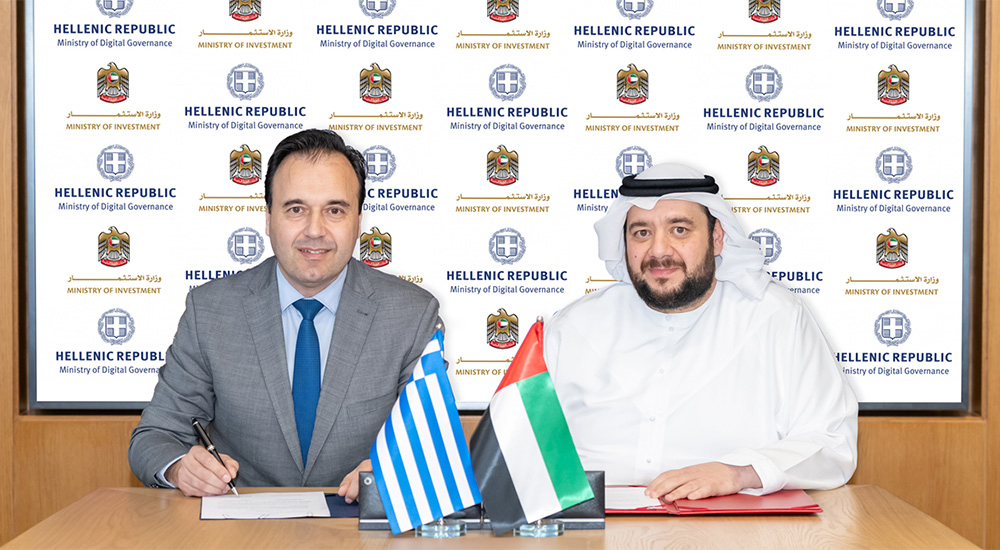He is a man in love with building products and businesses and thrilled by the thought of turning ideas into reality. A technology enthusiast and software developer by training, UP42 Chief Technology Officer Barry Nagel, started his career in 2005 as a web designer and developer for a small agency before moving into game development at InnoGames GmbH.
In 2014, he set up his own development company Discreteer UG, his first taste of life as an entrepreneur; coming up with business ideas and making them work. Later he joined BCG Digital Ventures, joining the company’s core developer team. This is where he got the first big break with the responsibility to work with electric scooters ridesharing venture Coup.
In his own words, it was a wild journey that started with an idea. He along with the team quickly built a prototype and soon saw the company signing up with a fleet of 1000 scooters, expanding operations from Berlin to Paris, Madrid and Tübingen. After a year of working as an engineer on the project, Nagel was made the CTO of Coup. As the CTO of UP42, Nagel works closely with the product teams to define the general architecture and direction of the company’s geospatial platform, covering the core elements from data discovery and access to large scale processing.
In an interview with Shubhendu Parth, he talks about the role of geospatial technology and data in the digital-era normal, the benefits of adding locational context to already existing massive data, the Asia scenario, technologies and use cases. Excerpts:
There seems to be a surge in the demand for geospatial data analytics in the new normal. What is driving the adoption of geospatial data supply, solutions, and tools?
Earth observation helps us measure and assess our planet’s natural and human-made environments and apply derived data and insights to solve critical issues such as climate change, deforestation, food security, and natural disasters. Think about the consequences of climate change like an increase in forest fires or floods. These require a swift turnaround time on decisions so that people can start doing something about it.
“A satellite view of a field from 600 kilometres above can help farmers understand the root cause of disturbances without resorting to generalised pesticide use.”
The sheer number of satellites now makes it possible to capture an image of any spot on the earth multiple times per day. In addition, advancements in ground segment tasking and processing mean image products can be delivered within hours of acquisition by the satellite. This combination of more frequent revisit combined with faster product turnaround is powering an exciting new spectrum of monitoring applications that have long been promised but were previously not possible.
Thanks to digitalisation, companies are already inundated with an avalanche of data. How does adding the location context help?
An exact location means better decision-making, especially when it comes to critical intervention in disaster management or risk assessment. Similarly, in agriculture a localised satellite view of a field from 600 kilometres above can help farmers understand the root cause of disturbances without resorting to generalised pesticide use, hence considering the impact of human intervention on the entire ecosystem.
From the Asia perspective, where does the region stand vis-a-vis the rest of the world in terms of using geospatial technology and data for driving business innovation and growth?
According to a recent report by the Economic and Social Commission for Asia and the Pacific – ESCAP, many countries in the APAC region have been taking significant steps from as early as 2005 to integrate geospatial information in their national policies and strategies – Indonesia being the first to develop a long-term national plan through 2025.
“From inaccessible flooded areas to polluted rivers to citizens below the poverty line, earth observation data and analytics are invaluable to locate, monitor, and plan interventions.”
As geospatial technology grew exponentially, these countries have been opening up to international cooperation, proving that the socio-economic benefits of earth observation insights are pursued globally with an equally strong commitment. Asia is widely recognised as a growing hub for innovative startups. This is the perfect storm for a region with growing needs and greater resilience.
Several agencies including ESCAP have strongly advocated the use of geospatial technology for meeting 2030 SDG objectives. How do you see GT helping the Asian economies meet their obligations?
If necessity is the mother of invention, we can objectively say that this pandemic has pushed many countries to invest more heavily in innovation to overcome some of the toughest challenges of our times. Covid-19 has exposed the deepest cracks in our society and environment, particularly in regions with a long history of inequality and disaster. From inaccessible flooded areas to polluted rivers to citizens living under the poverty line, earth observation data and analytics are invaluable resources to locate, monitor, and plan interventions.
“In APAC region, natural resource management, disaster risk reduction, and social development are three areas where advancement in geospatial technology can make a difference.”
The ESCAP report indicates natural resource management, disaster risk reduction and resilience, and social development as the top three priorities where advancement in geospatial technology applications could make a difference in APAC. This is set to possibly accelerate the race of Asian countries to achieve the 2030 SDG objectives.
And how ready are the Asian countries in terms of their policy framework to benefit from GT?
We are generally witnessing a thirst for more data and insights for better decision-making, and concrete steps have already been taken in the region to facilitate and expedite the integration of geospatial technology in national strategies. In India for example, three policy drafts on Space-Based Remote Sensing Policy of India-2020, National Geospatial Policy-2021, and Satellite Navigation Policy-2021 are currently being reviewed. According to the recent report ‘Geospatial Artha: Indian Geospatial Market, Economy and Industrial Development Strategy,’ the country’s geospatial economy is expected to touch INR 63,000 crore by 2025.
The government’s recent decision to liberalise mapping technologies and establish a collaborative geospatial ecosystem through the Indian Space Association – ISpA is tangible proof that the country is not only ready but fully invested in the sector.
Since you mentioned India, do you think the steps to unlock the space sector and allow private sector participation in the country are adequate to democratise geospatial data for use by organisations across sectors, as well as start-ups?
Satellite imagery is assuming a larger role on the world stage as governmental organisations increasingly rely on Earth observation technology as a cost-effective and unbiased information provider. In some cases, government policies explicitly call out the need for satellite imagery, while in other applications, it is simply the only viable data source to address the issue at hand.
“Artificial Intelligence and Machine Learning are critical technical capabilities that will unlock the downstream impact of Earth observation.”
The ISpA is building public-private partnerships and advocating policies that leverage India’s space technologies for that nation to become a leading player in the global space arena. As a growing startup and active member of this ecosystem, we are definitively excited to see more government initiatives that will drive satellite image demand at a global level.
On the technology side, businesses are already benefitting from the analysis of data from ERP, CRM, social media, mobile applications, etc. How do you see the information from OT, DT, and GT converging in the days to come?
Geospatial technology provides a different perspective, brings extra context, and enables the understanding of localised business challenges. We believe that data fusion is a key driver to unlocking detailed insights and laying the foundation of innovation. From a technology standpoint, it requires the democratisation of geospatial technology, including the ease of access to relevant data, corresponding processing algorithms to streamline business operations.
How can organisations integrate these data sets, particularly geospatial data with business data? Does it require a major change in the way an organisation works?
We believe that Artificial Intelligence and Machine Learning are critical technical capabilities that will unlock the downstream impact of Earth Observation. Machine Learning allows people to quickly and automatically process large amounts of data. At the same time, AI and ML cannot solve all problems effectively, and understanding their role is of utmost importance. A solution provider needs to deliver solutions to an end customer by wanting to automate the flow of data and analytics as much as possible. It is critical that a marketplace and platform offer access to the required data and analytics in a way that enables automation. A key feature of the UP42 platform is making these resources accessible via API.
So, what technologies can help organisations access high-quality geospatial data and analyse it?
We believe that a neutral one-stop shop for data and analytics can be the perfect solution for businesses looking for an easy and flexible way to access and work with big data. UP42 has been designed with this principle in mind: a developer platform and marketplace. This model offers extensive data sources such as satellite and aerial imagery, weather data, and digital elevation models, together with processing algorithms to identify objects, detect the change, and find patterns. Through a very simple pay-as-you-go model, customers cost-effectively purchase just the data needed to cover their area of interest and leverage the platform’s cloud computing power to process and analyse the data sets. We are an API-first platform, which makes our platform actionable by automating the flow of data and analytics through to our customers.
The general perception is that only large corporations and governments have the wherewithal to access and benefit from high-resolution data information. Can technology help it make more accessible?
In 2019, UP42 was launched with the goal of democratising geospatial technologies by creating a unified online platform where users can access all the resources needed to extract meaningful information from raw data without making any major investment in software and computing infrastructure. This has successfully lowered the financial and technical barriers to entry, enabling businesses of all sizes to impact the commercial market.
Our growth is not just an isolated phenomenon but the result of a general trend in an industry that has expanded tremendously in the last decade. With dozens of new remote sensing satellites launched later this year and more to come in the near future, geospatial users of all sizes and in all sectors have more data sets than ever to choose from.





